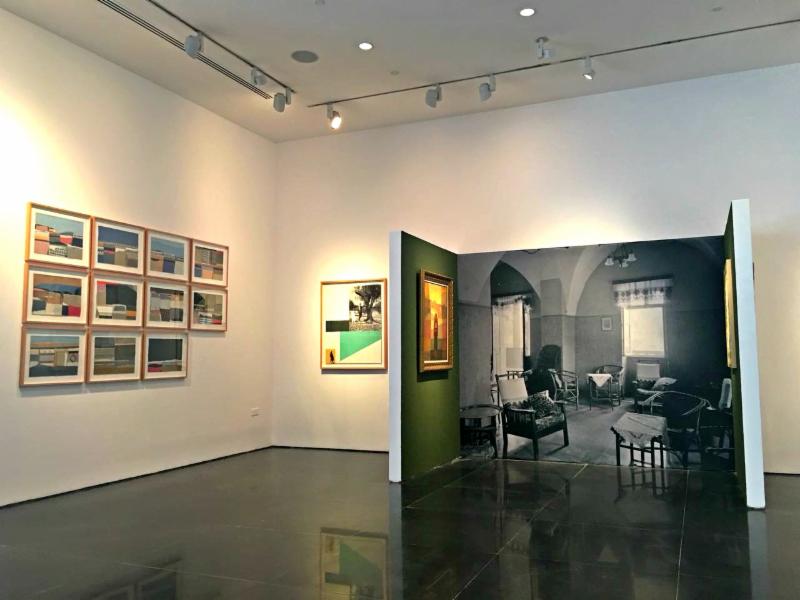Tabari Artspace is proud to present El Beit, a collective showing of contemporary and modernist Palestinian artists exploring themes of identity through painting, photography and sculpture. Featuring the work of three artists – Hazem Harb, Mohammed Joha and Sliman Mansour – the exhibition reflects on the collective experience of lost identity and displacement in Palestine. The show’s title, which translates from Arabic as ‘feel at home,’ makes reference to these themes.
By facilitating a dialogue between two different generations of artists, El Beit casts a light on the ongoing impact of the Palestine-Israel conflict whilst providing an insight into various artistic practices and perspectives in Palestine today. Issues of modern Palestinian collective memory and its role in shaping national identity and historic legacy unite the artists, despite their distinct styles and points of reference.
Contemporary artist Hazem Harb shows a series of collage works inspired by the lake in the city of Tiberias. This lake has long been considered a sacred area that holds significance for Palestinians. The city was used as an important centre in Palestine for many decades until the 1936–1939 Arab revolt, which is a central theme in Harb’s works. The collages are formed from a mixture of archive images of the lake as well as photographs the artist has taken himself.
In addition, Harb’s installs an enlarged archive photograph depicting the interior of a home situated at Lake Tiberias, transforming a section of the gallery, into a domestic setting. Modernist artist Sliman Mansour’s paintings Girl in the Village and Father and Mother on their Wedding Day are displayed atop this photograph. The former depicts a young woman standing in a thobe, a customary Palestinian dress, framed by an abstract landscape in the background which is evocative of Palestinian tradition
and sentimentality. Father and Mother on their Wedding Day depicts the artist’s parents, enclosed in a frame of olive trees. Many Palestinians consider the olive tree to be a symbol of nationality and connection to the land. This installation situates both of the artists’ works in direct dialogue within a familiar setting, allowing the artists to rebuild and re-imagine a homeland which is now inaccessible. The immersive environment created by Harb’s and Mansour’s works communicate a particular sense of displacement and nostalgia.
Septuagenarian artist Mansour, a major pioneer of modernist art in Palestine, has dedicated his career to visualising the Palestinian struggle throughout history and is the only one out of the three artists still residing in the state. With the start of the first Intifada in 1987, he founded the New Visions art movement. The movement’s decision to boycott Israeli-imported art supplies and use natural, locally sourced materials, such as mud, henna and clay, gave rise to Mansour’s featured series of Ten Years in Mud paintings, bringing a tangible dimension to his thematic exploration of land. The abstract works use the earth itself to depict the land and its people, the cracks from the drying process illustrating the passage of time.
Mohammed Joha exhibits 14 collage works on paper exploring the destruction of Palestinian homes throughout the conflict. Some of the houses featured are fictional and others are drawn from the artist’s memories. Joha considers themes of childhood, loss of innocence, freedom, identity and revolution within this context.
Through showing Mansour’s works alongside the younger expatriates Hazem Harb and Mohammed Joha, the exhibition seeks to accentuate the long-standing challenges of the people across decades of unrest. Mansour has been working with themes relating to Palestinian identity for much of his career and El Beit also showcases the younger generation of artists who have carried on demanding recognition for the displaced peoples of Palestine.




















Love art from high conflict areas, always brings a different perspective